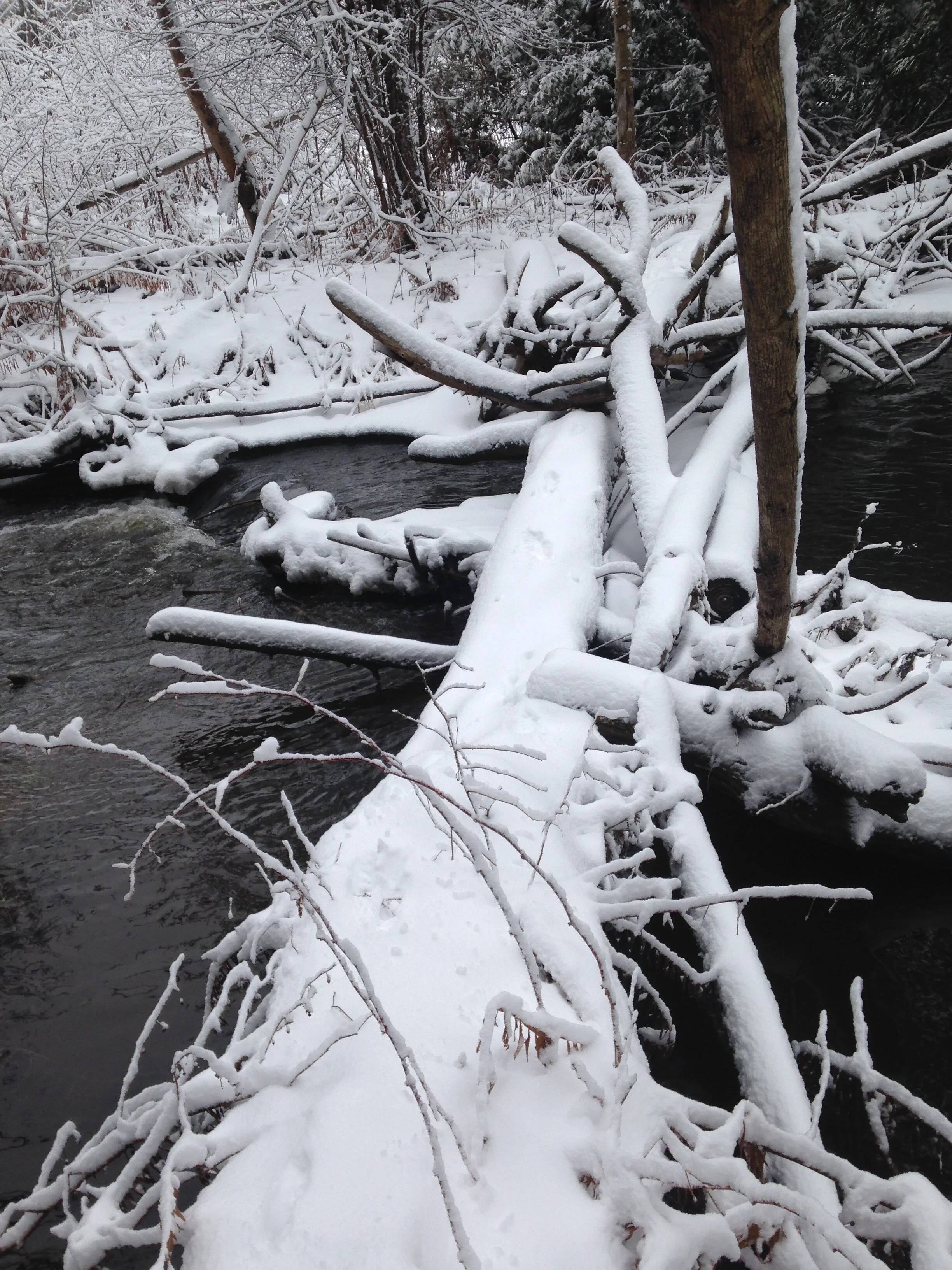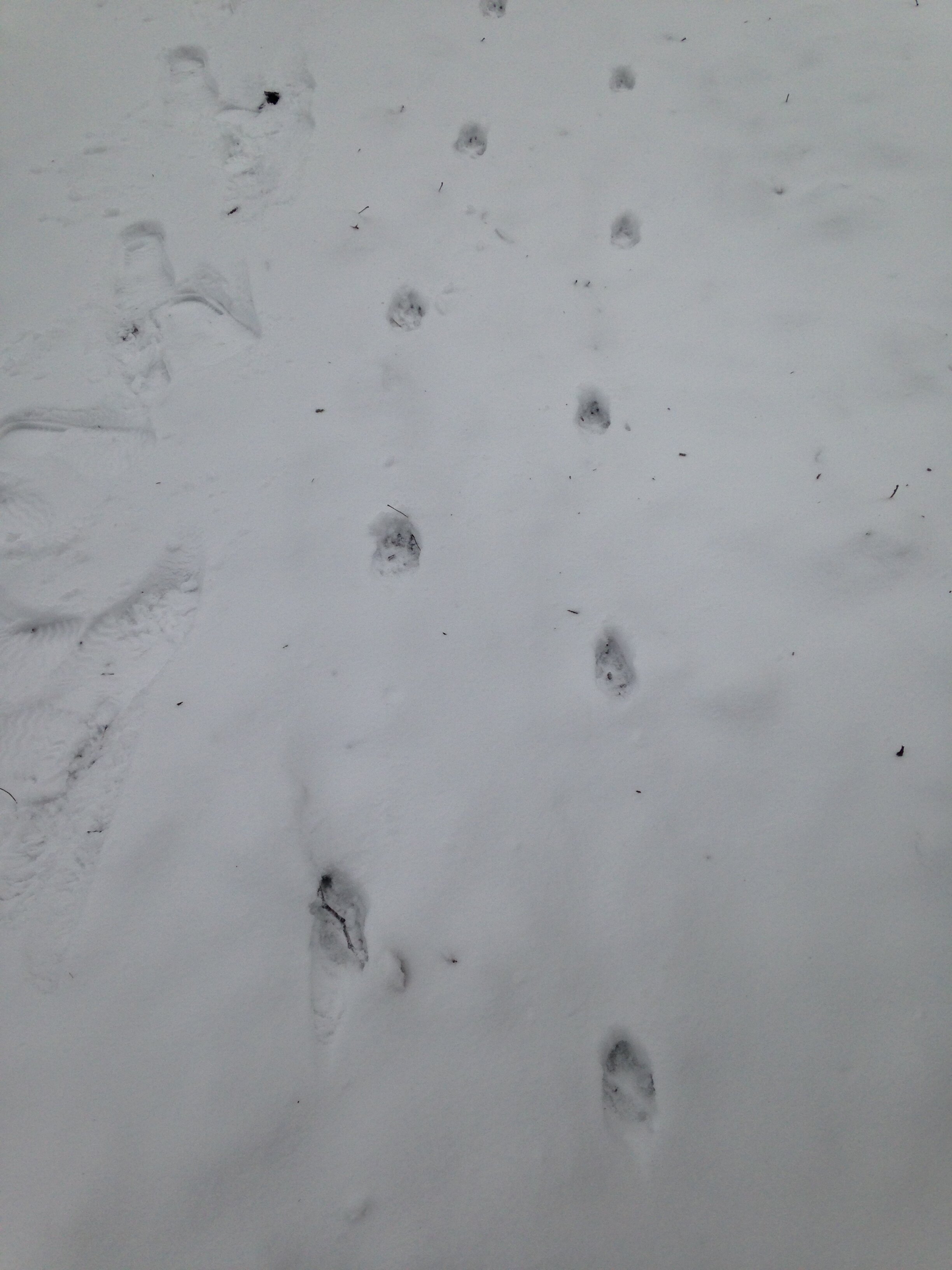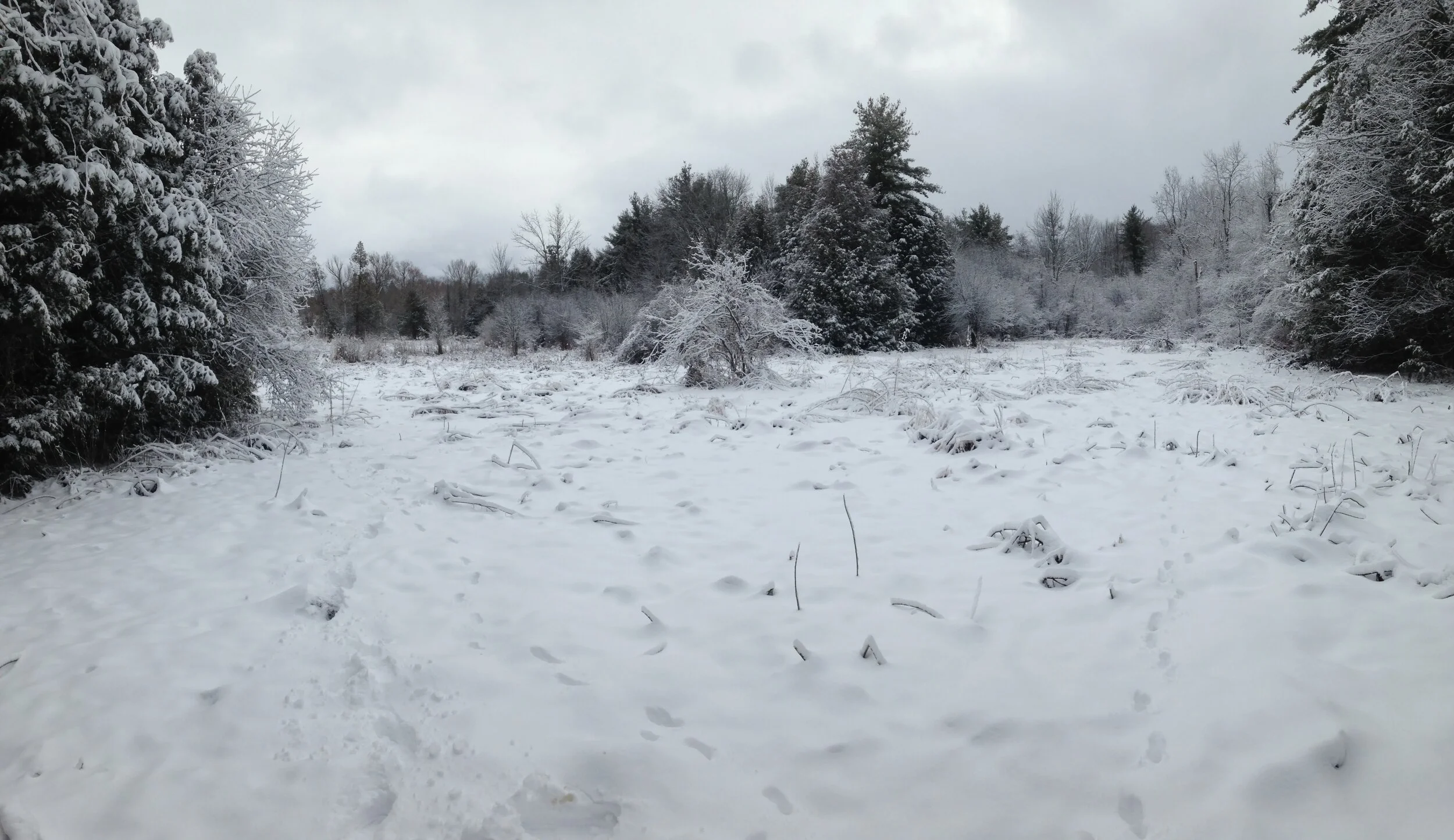Tracking Journal : December 25, 2020
I heard Coyotes (Canis latrans) howling as I walked up to the forest. Maybe two or three, but the way their songs work, it sounds more like 5 or 6. I only was able to record the last little bit as I didn’t have my phone out and wasn’t expecting anything.
Only minutes before I was watching a couple of black Grey Squirrels (Sciurus carolinensis) and some Dark-Eyed Junco’s (Junco hyemalis) picking at an old corn cob on the middle of the street as I was walking towards the forest. As I came up to where they had been (they took off as I got close) I pulled out an Apple, split it in two, and tossed it to the ditch on the side where they’d gone. I try and bring a little present for the land and the inhabitants when I go out tracking. I don’t always remember, but sometimes I do. It’s almost always food, usually Apples or Walnuts, and I tend to assume that the Squirrels will get whatever I leave. It’s best to just intend what I bring to be for them. I have other gifts for the trees, but that’s a different story.
It rained yesterday for part of the day, and then snowed last night for a good portion of the evening, and it snowed pretty thick as well, maybe about 5-10 cm. I hoped it would stop with enough time for some of the animals to get moving about on the land so there would be nice tracks this morning, and that’s pretty much how it all worked out.
When I got to the mouth of the forest I saw some Canine tracks coming in from the field to the East, onto the road, and then tuck quickly back into the woods. They’d been snowed in so I noted them, and then continued in and onto the main trail, only stopping to introduce myself to the woods and announce my intentions. I kept on the main trail noting how the Canid tracks left, and then returned a little ways away. This happened a couple of times so I eventually decided to follow one line of tracks around a large ring of Spruce (Picea spp.) trees which I believe were encircling a small pond. The tracks left the Spruce line and headed through some thicker branches back East, and I kept on the ring and headed back towards the main trail. I am glad I stuck with this because those same Coyote tracks came back down my way and I found a spot with multiple tracks, scuffed up snow, and a faintly yellow-red spot in the middle. Was it? Could it be?

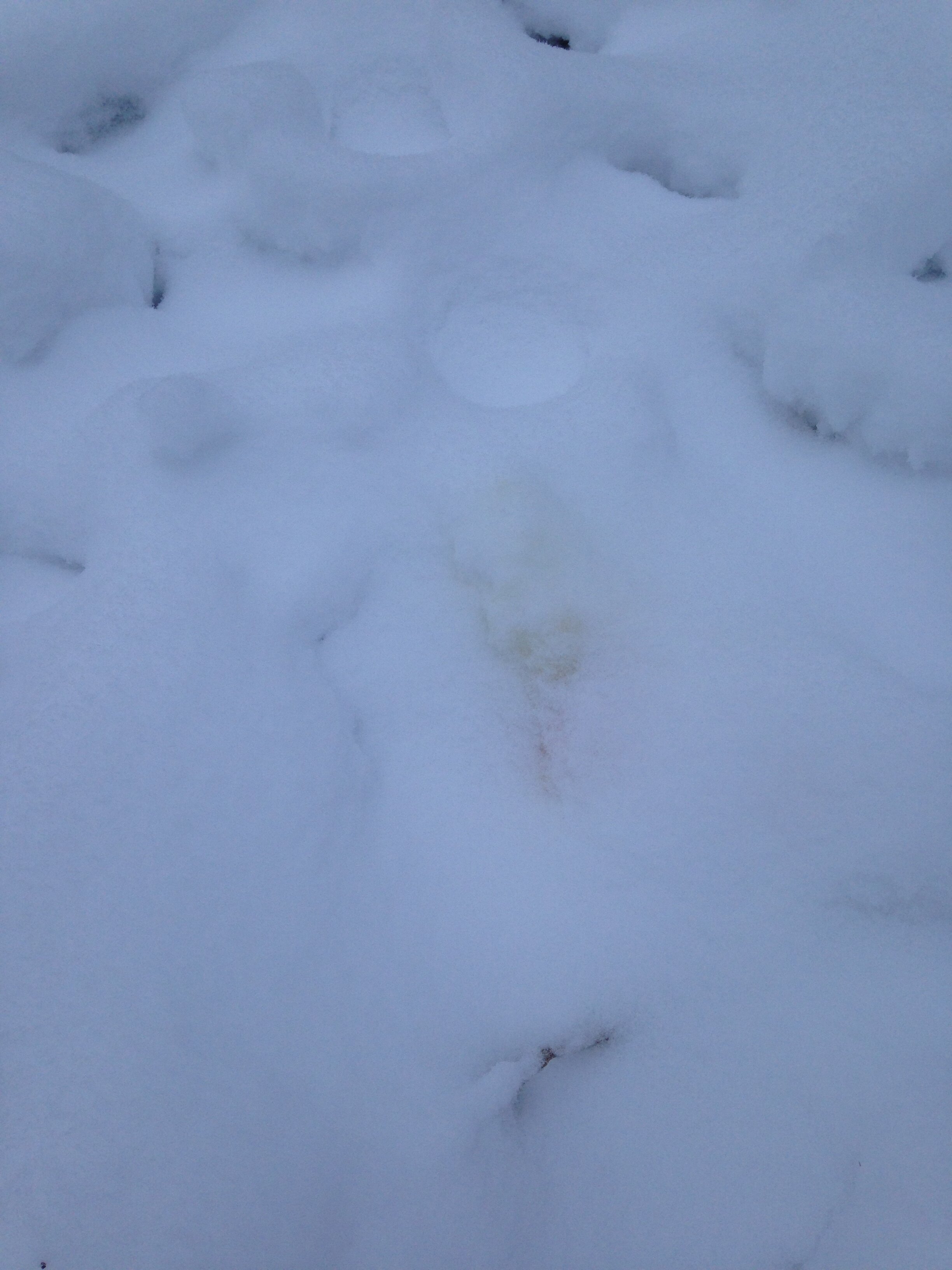

From what I have learned in the past is that breeding season for Coyotes starts in February, but perhaps these two were off to an early start? The estrous cycle for Coyotes lasts about 2-5 days but the Proestrous and precopulatory behaviours can start taking place up to two months beforehand as opposed to the much shorter 8-10 days for domestic Dogs (Canis lupus familiaris). This Proestrous period is similar in traits to domestic Dogs, in that this is when the vulva starts to swell and the blood or “sanguinous fluids” begin. In one paper I read (cited below) this bloody discharge can begin in early December, which would correlate with with what I saw today (Dec. 25th). Males are very aware of the females during this period and appear to be ready to go, but the females won’t allow the males to mount. But other courting behaviours are demonstrated between the pair. Courting behaviours include:
playful wrestling and chases
grooming each other
body bumps and hip pushes (“love shoves” as I call them)
sleeping curled up together
sniffing or licking each others genitals
Personally, I have not seen these behaviours but sometimes you can imagine these things happening when you look at the tracks.
I kept walking on through the forest, getting away from what was more visibly once a driveway, heading into a bit more Eastern White Cedar (Thuja occidentalis) area which was also closer to a large creek. There were lots of visible Squirrel tracks, and excavations looking for foods hidden below the snow and dirt.

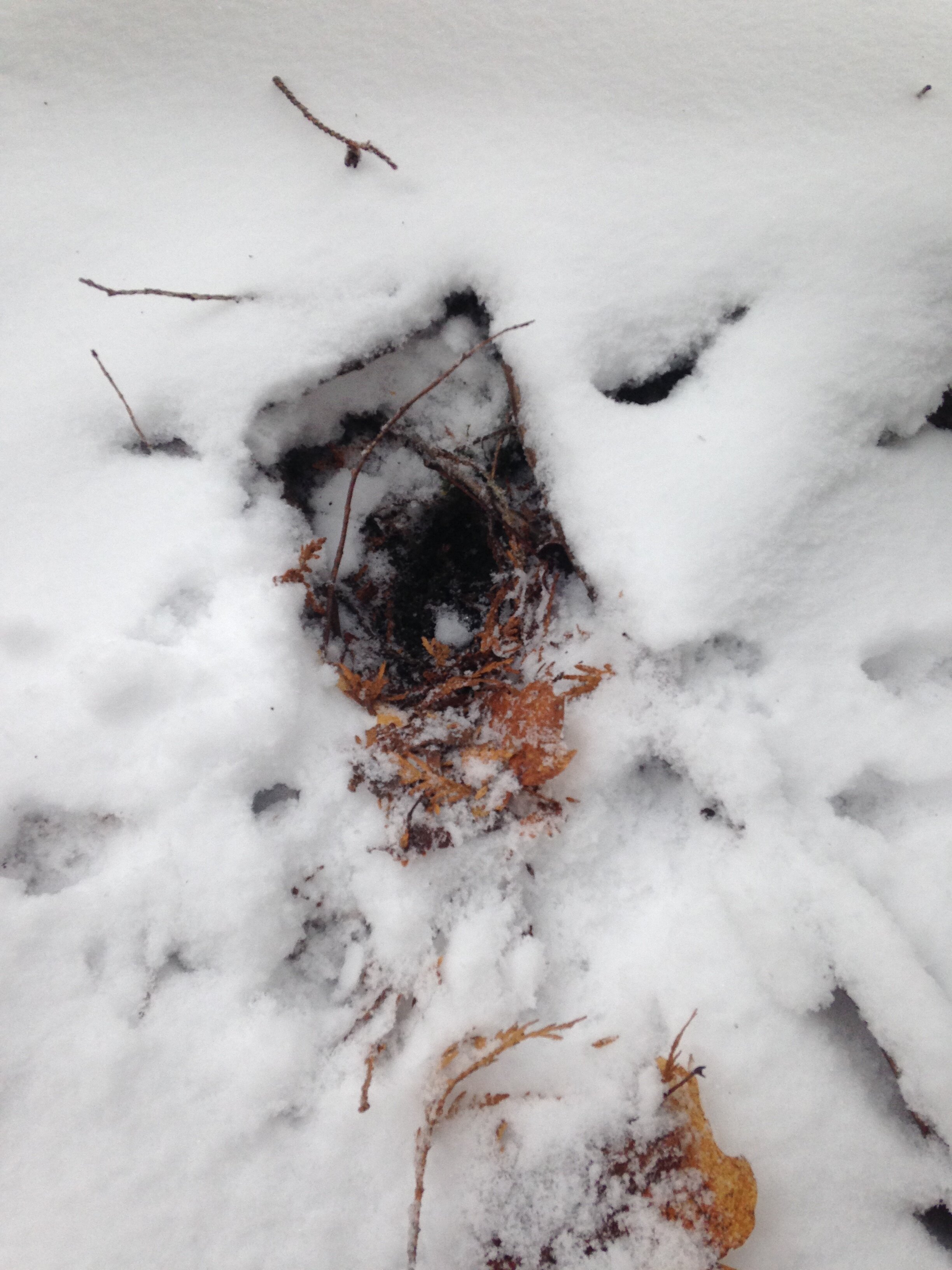
I saw both Red Squirrels (Tamiasciurus hudsonicus) and Grey Squirrels today but from looking at the tracks and checking out the caches I think the one pictured is from a Grey Squirrel. Grey Squirrels are “filers”, hiding individual food items away for consumption later, where as Red Squirrels are “pilers”, where they cache a large hoard of food items in one spot, usually in a pile. Folks call it “scatter hoarding” for the Gray Squirrel, where as the Red Squirrel is a “larder hoarder”. I think I am a bit of both, putting food in the pantry and also hidden away throughout my house (mostly for chocolate).
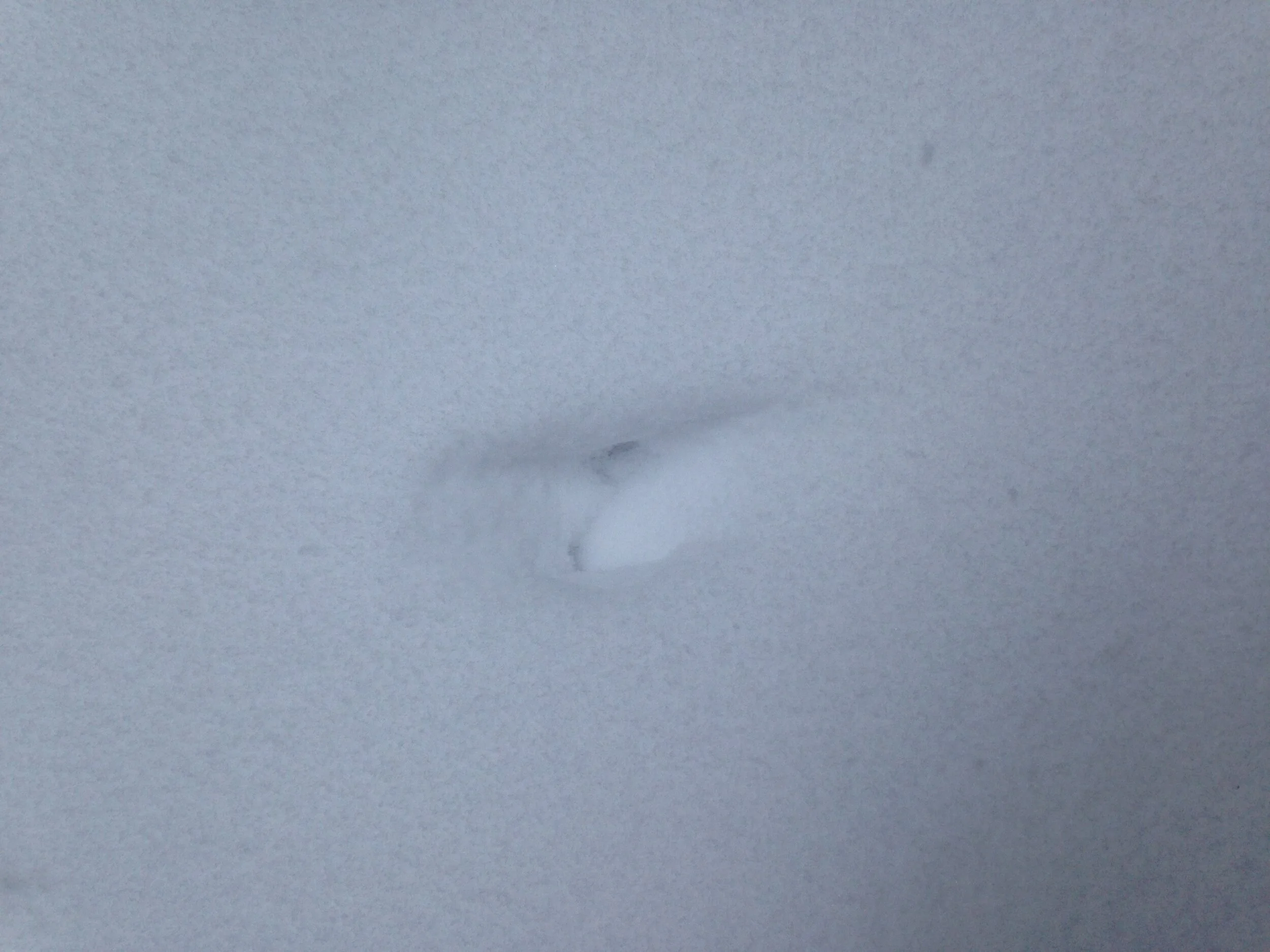

Another set of tracks were seen along the way today. There were what appeared to be two imprints beside but slightly offset from each other. The trail width was 3.5 cm with a stride length of 81 cm (I didn’t measure the group length - forgot! - nor the individual feet sizes as they were fairly indistinguishable). Thinking to what could be so small, with such a long stride, going at a 2x2 loping gait, I am thinking a Weasel (Mustela spp.) but can’t be certain which. If I go by the numbers it would be on the very high end of a Least Weasel (Mustela nivalis), or just right for a Short-Tailed Weasel (Mustela erminea) but I am used to finding broad body imprints from the Short-Tailed (I didn’t find any!). I think I will err on the side of Short-Tailed and maybe go back tomorrow and see what I can find. What are the best ways to tell weasels apart by their tracks? Is it the trail width? Stride length? Foot size? Characteristics of the trail? I don’t know yet, but I hope to soon.
The Coyotes popped back onto the trail and I noticed the trail was a lot fresher than the ones I noticed before. I decided to back track instead of following them. I didn’t know yet how fresh the tracks were and didn’t want to disturb them, so I followed them off the trail and back into the Cedars. They wove beneath lower branches and between some short White Ash (Fraxinus americana) saplings. Eventually I came to the creek where the trail split between the two of them. It looked as if one Coyote had come from across the creek and the other along the bank.
Coyote tracks coming across the log, towards the camera
I wanted to follow the trail some more, but I didn’t feel confident to cross the creek. While looking around for a stick I could use to help get across the log I ended up on the trail of the other Coyote. I followed them through more small brush until eventually the trail led across different log coming to my side from the opposite side of the creek. I looked around some more and noticed that there were snow covered tracks leading to the log from my side and realized that the Coyotes had crossed, from my side to the other side, earlier in the night, probably slept a little on the other side, and returned when the snow had stopped falling, making for the fresher trail which I had backtracked and led me there.
Since I still wasn’t prepared to cross the creek I turned around, got back on the Coyote trail and began “foretracking”, or following in the direction that there were headed. This is fun as there is always a small possibility that we will encounter the animal, but also could be detrimental in the winter. If you pursue an animal too much and they get pushed along further and further, it can really deplete their energy supplies. If they can’t find resources (food) to replenish that energy, you could push them to a point of no return and they could succumb to the harsh winter conditions. Luckily, the tracks looked like the animals were well on their way, I was going slowly, and I had given them a little more of a head start when I began by backtracking them.

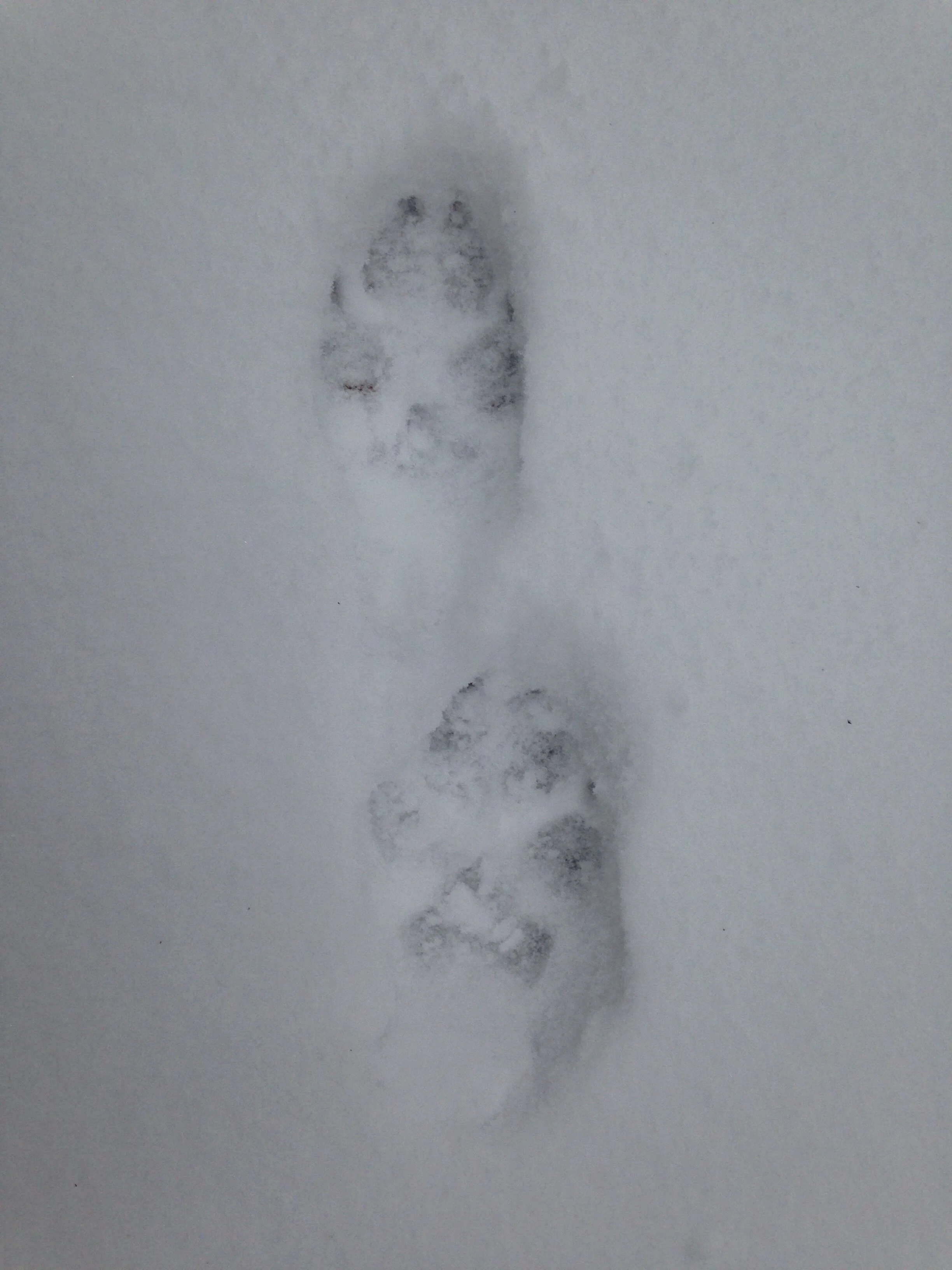
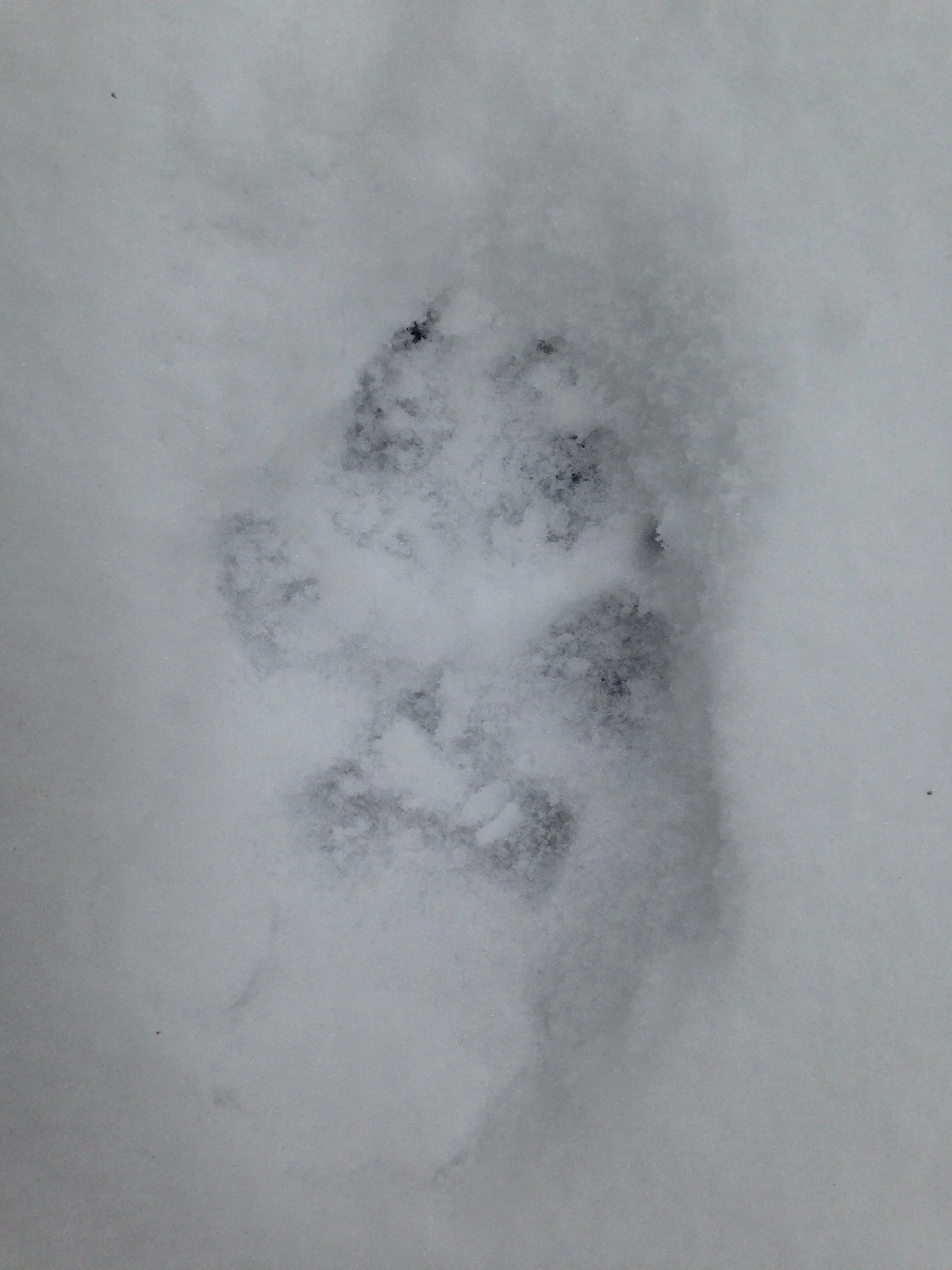
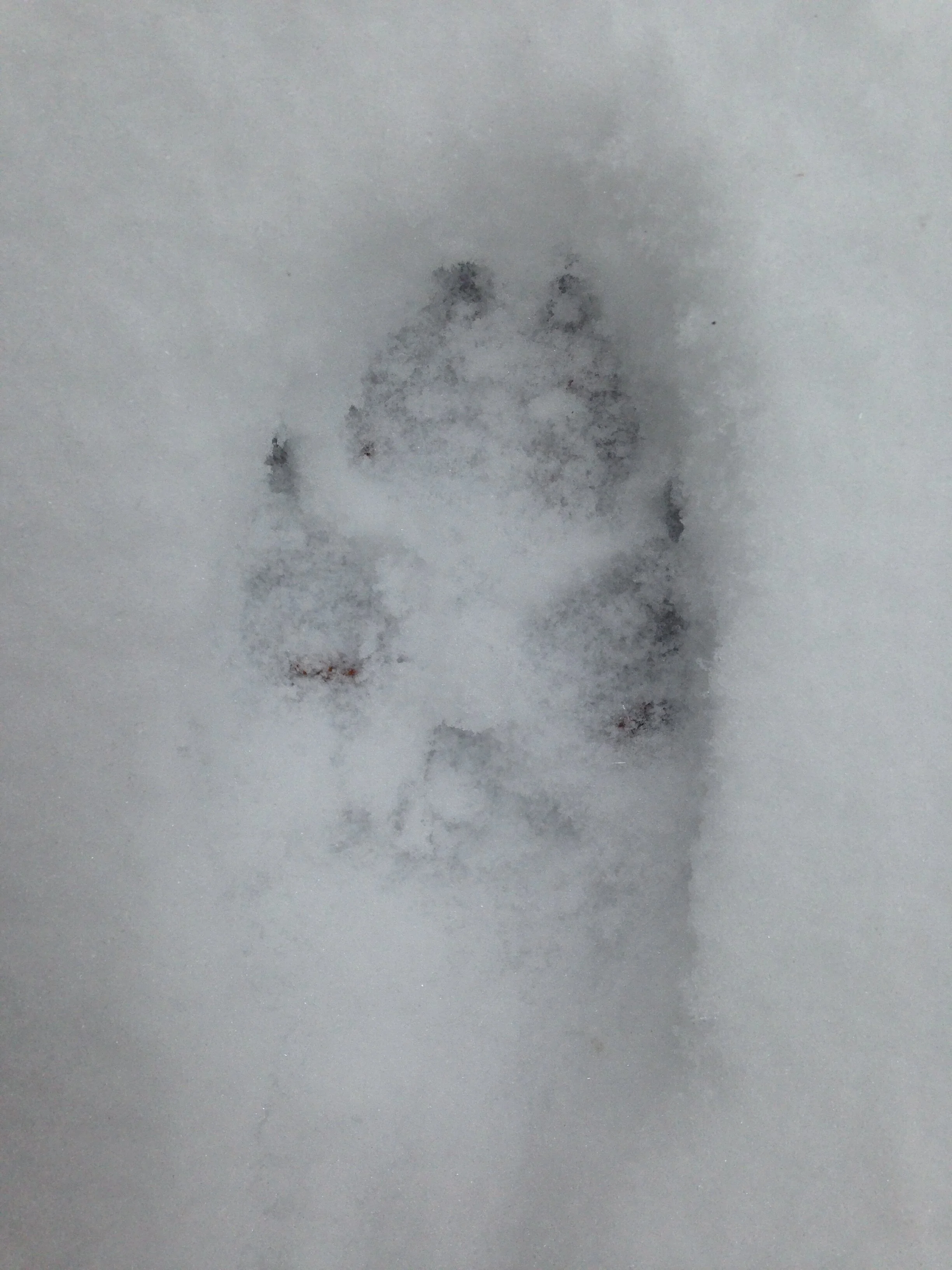
The above images show the trail of one the Coyotes in a side trot gait, a group of two tracks, the larger front track, and the smaller hind track. I often see these side trot gaits when animals are making their way quickly through an open area. This trail looked like one the of the two coyotes had been trying to catch up with the other one and so was going a littler fast than the trotting gait of the smaller one.
Explaining gaits is tough, but I think showing visually how they work makes sense. Here is an excerpt from a video by educator Steve Leckman on animal gaits:
So the Coyotes were making their way down what seemed to be an old ATV trail. Occassionally their trails would overlap, sometimes diverge. It was pretty neat to walk beside them and watch how they wove in and out of each others proximity, though never any further than about 1 m (~3 feet). When they were walking beside each other, their gait was mostly a direct register trot, with their hinds landing on top of where the fronts just were.
Two Coyotes trotting alongside each other
I began to notice that one of the trails was larger. The tracks appeared to be a bit bigger and the stride length was a little bit big, but barely noticeable. I pulled out the tape measure and it turned out to be true. The larger tracks had a stride length that was usually about 2 cm longer than the other Coyote with the smaller tracks and trail. This affirmed the idea that I had had earlier, that I was following a courting pair and that the smaller tracks and trail are from the female. To my luck it was confirmed again shortly.

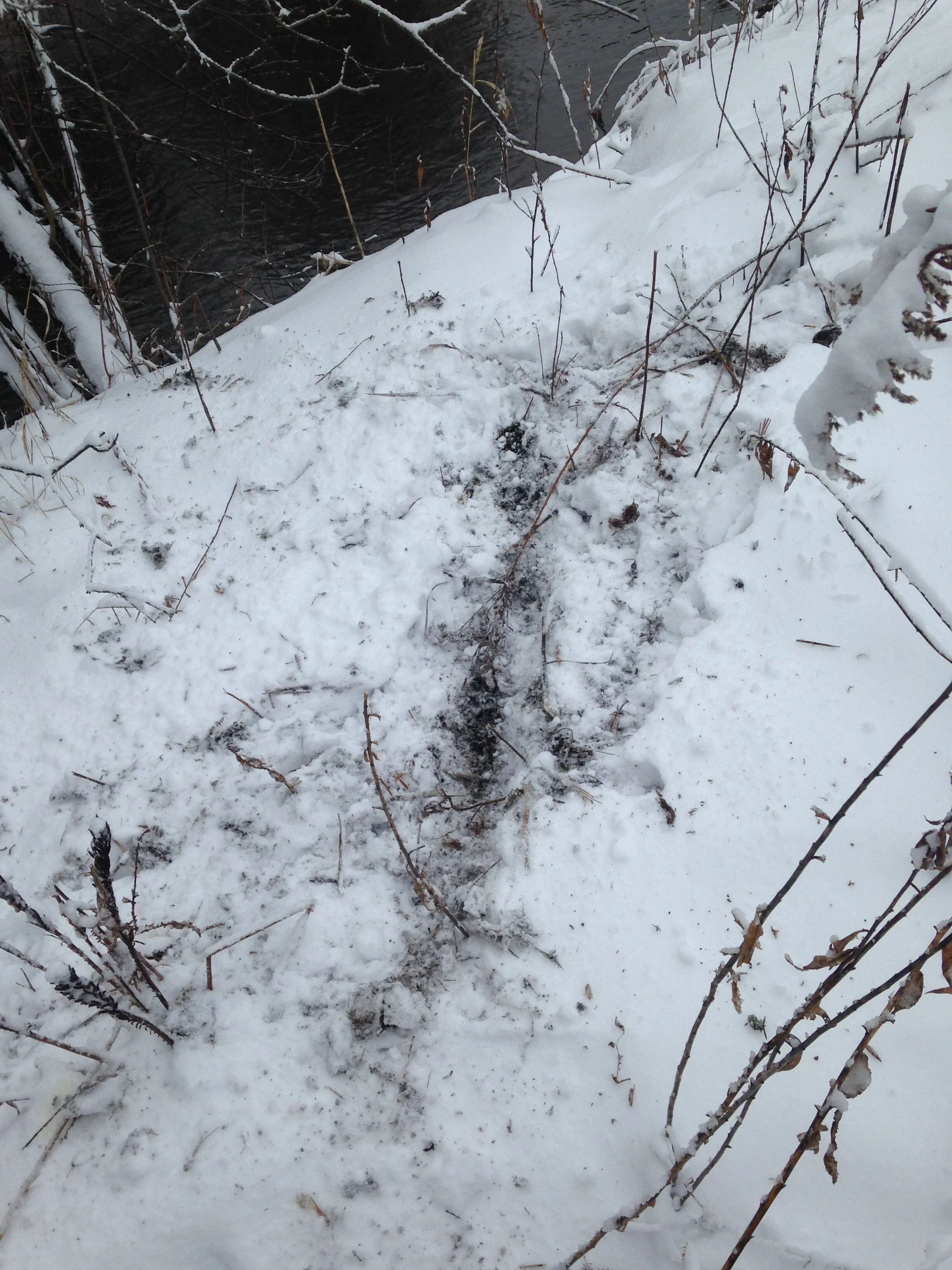
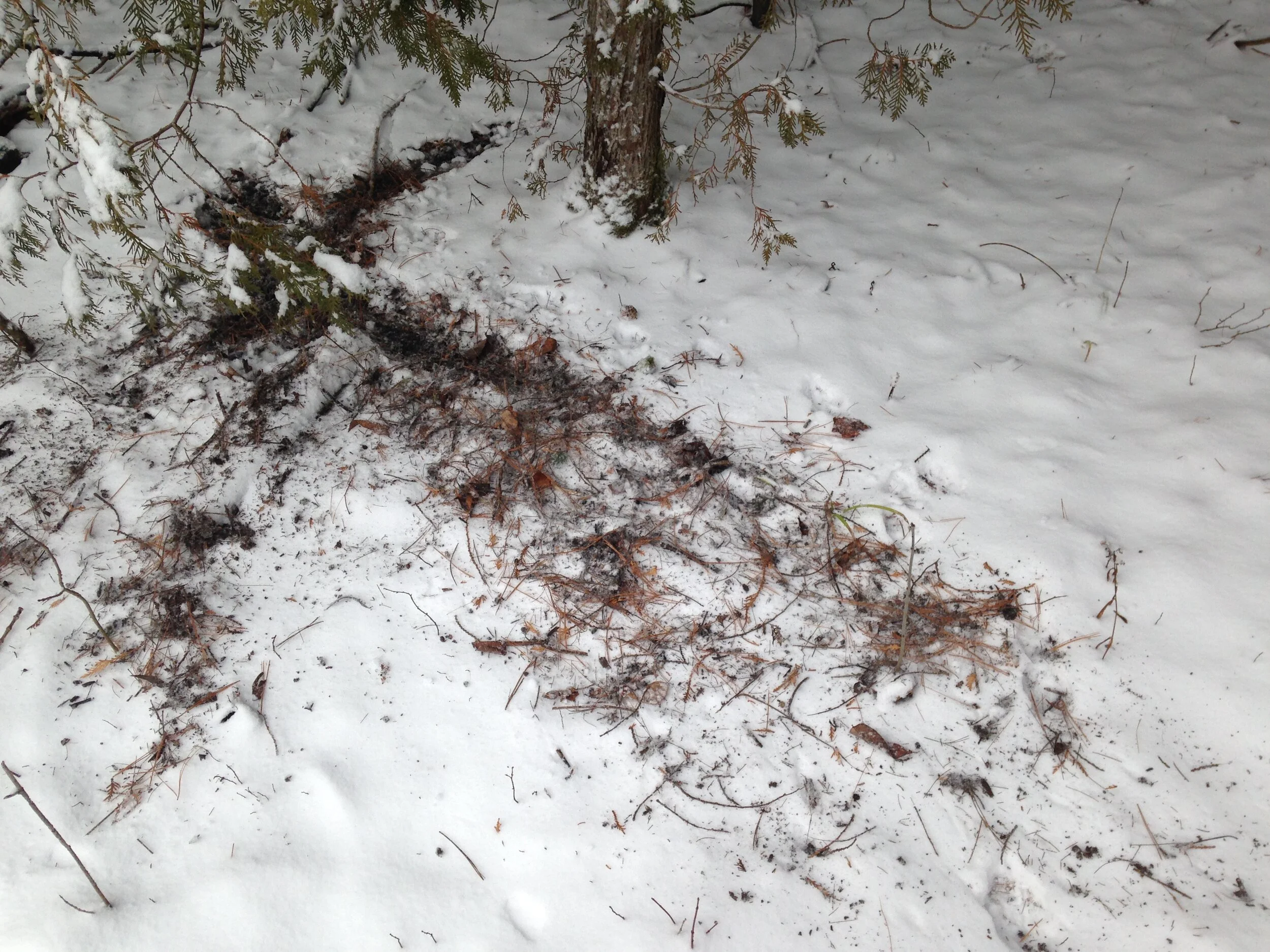

In short time, the larger Coyote, whom I suspected to be the male, veered of the trail slightly and scraped the snow revealing Cedar leaves, twigs and soil below the snow. When I measured the scrape from tip to the farthest bit of debris I could find it was about 330 cm (130 in) long. I later found more scrapes, 4 in all, and they were consistently large, messy, non-linear and from the two I inspected closely, created by the larger individual (the male?). I wonder if it’s just the males or both sexes that make the scrapes? In what I’ve read so far it seems like it is just the males.
As I walked on following the Coyotes I had to avoid some of the places where they went such as off the public land on to other peoples properties, but the trails consistently came back to where I was walking. I crossed the river at one point, following the Coyotes trails, and luckily only one foot went through the ice and snow. I kept on following them until I walked through a larger field and the tracks ducked down into a small ravine and into a dark culvert surrounded on all sides by thick brush. This felt like a place that was just for the Coyotes and I decided that it wasn’t appropriate to follow. I turned around, took a photo, and began the long walk home.

